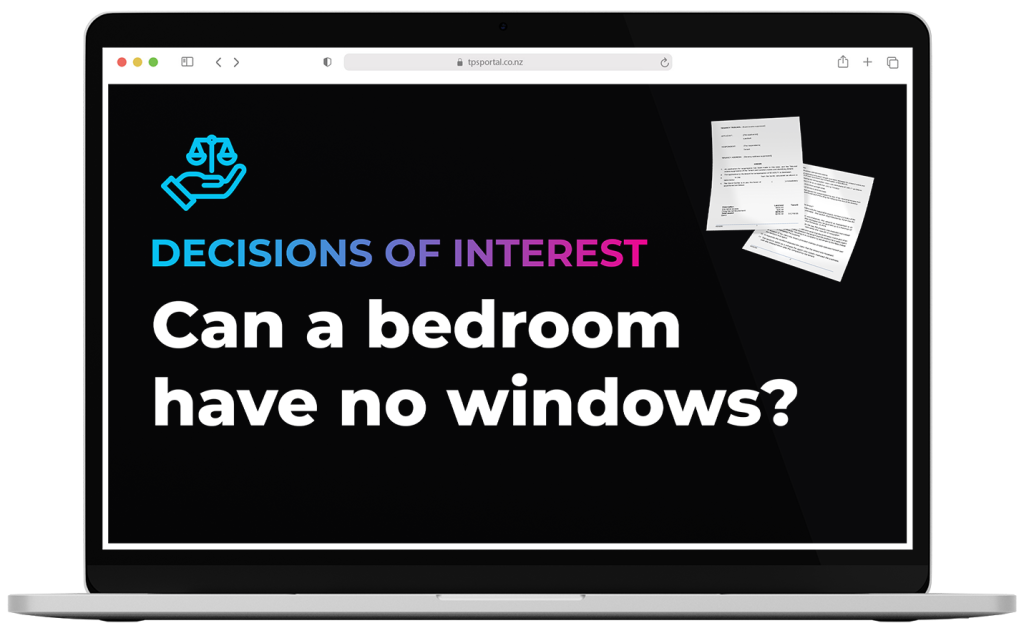
Is it possible to have a bedroom with no windows? While it’s not common, it’s a scenario that can occur in rental properties. Dive into this week’s DOI, where various regulations take centre stage, and tensions rise over the definition of habitable rooms.
Case Background:
In this case, the tenants argued that their living conditions breached the Housing Improvement Regulations 1947, particularly concerning habitable rooms. They highlighted several rooms in their apartment that either lacked windows to an external wall or had inadequate ventilation and natural light.
Legal Authorities:
Housing Improvement Regulations 1947: These regulations set standards for habitable rooms, including minimum dimensions and requirements for windows and ventilation.
Healthy Home Standards: Although not relevant to this order, because the rental property did not need yet to comply with the Healthy Homes Standards (HHS), there is an exemption that is relevant.
Under regulation 22 of the HHS a habitable space does not require a window if:
(a) when the habitable space was built or converted into a habitable space, not having qualifying windows or doors that would comply with regulation 21 was lawful; and
(b) if not having qualifying windows or doors was lawful only because the room met alternative ventilation requirements, at the commencement of the tenancy the room still meets those requirements.
Building Act: Sections 116B, 121, and 123 relate to building standards and compliance.
Clause G7 of the Building Code: Pertains to the natural light and ventilation requirements for habitable spaces.
Clause G3.9 of the Central Area Urban Design Guide of the District Plan: Provides guidelines for building design and habitable room standards.
Residential Tenancies Act 1986 (RTA):
Section 36 requires a landlord to take all reasonable steps to ensure that, the commencement of the tenancy, there is no legal impediment to the occupation of the premises for residential purposes
Section 45 Outlines the landlord’s responsibilities comply with all relevant enactments for buildings health and safety.
Section 78A: Provides the Tenancy Tribunal with authority to make orders and to determine if the property is unlawful
Key Points from the Case:
Tenants’ Argument:
The tenants provided photographs showing rooms with insufficient natural light and ventilation:
Room 1: No windows to an external wall, natural light only through a sliding door, and no ventilation.
Room 2: Partly skylight roof and windows leading into the lounge.
Room 3: Window opening onto the lounge.
Lounge ventilation: Panel operated by a pulley system.
Landlord’s Response:
The landlord contended that Room 1 was never intended to serve as a bedroom, despite its glass doors which might suggest otherwise. They argued that the design of Room 1 was consistent with contemporary architectural trends in Wellington apartments, aimed at maximizing open-plan living spaces rather than traditional bedroom layouts.
The landlord noted that the definition of a “habitable room” under the Housing Improvement Regulations and the Building Code is ambiguous
The landlord further argued that the premises met all other relevant health and safety standards, including ventilation and natural light requirements as stipulated in Clause G7 of the Building Code. They asserted that the property’s overall compliance with these standards negated any claims of unlawfulness due to the design of Room 1.
So, what expert evidence proved crucial? And what was the outcome?




